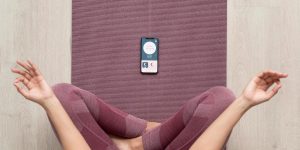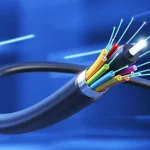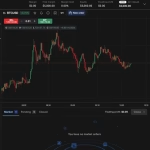Do you wake up and check your phone before you brush your teeth? Do you get anxious when the battery is getting low and you’re nowhere near a charger? The average American spends over 7 hours every day behind a screen. This includes work and leisure time across various devices, such as PCs, laptops, smartphones, tablets, and televisions. Digital devices have become as essential to our daily routine as that first cup of morning coffee.
However, it is easy to become digitally overwhelmed when you are constantly connected. As a result, there are two leading schools of thought about coping with this overload. Some suggest a complete digital detox is the only way to break the habit. In contrast, others prefer a more mindful approach to screen usage.
Is a complete disconnect the way forward, or is it better if we all learned to better manage our relationship with technology? This article will discuss both approaches to determine which one is more effective.
What Is a Digital Detox?
A digital detox is a complete disconnect from all digital devices. This is a cold-turkey reset on your relationship with electronics. It is a concept gaining popularity, with people claiming they feel near immediate relief from being notification-free. When the demand to be constantly available and connected is taken away, people report a noticeable and immediate drop in their stress levels. Going without screens for longer periods also helps improve focus, as research indicates that prolonged screen use impairs our concentration level.
Practitioners found that when they were unable to check notifications and other online distractions for an extended period, they rediscovered their ability to find enjoyment in reading a book or engaging in a conversation with someone beyond a few pleasantries. Increased creativity was also reported, with people finding themselves engaging in long-forgotten hobbies. But the benefits don’t stop there. People who regularly detox also discover they sleep better while away from their devices. This happens because they avoid all screens, not just at bedtime.
The Power of Mindful Tech Use
Mindfulness is all about being more aware of your surroundings and how you interact with them. But what does digital mindfulness actually mean? It’s about using technology with clear purpose and staying aware of how different apps and activities affect you. Instead of doomscrolling through social media, the mindful use of technology is about focusing on healthy habits and usage that aid well-being rather than hinder it.
Digital mindfulness is an attractive proposition for those who are overwhelmed by the abundance of technology but can’t or do not want to fully disconnect. It could be for work reasons or because they need to stay connected to friends and family that may not be within easy reach otherwise.
Taking a more thoughtful approach to digital connections enables people to reflect on their usage and recognize when it becomes unhealthy or meaningless.
The process also involves reflection on the apps being used. It encourages you to remove any that are not helping your overall development, which includes those used for entertainment, such as puzzle games or casino apps in the USA, which can offer a welcome distraction when needed.
Potential Drawbacks to Consider
Both a full detox and a more mindful approach to digital engagement have their share of drawbacks. A complete detox is a complex undertaking, and for those who don’t remember the “old days” of dial-up connections, it can be a surprisingly isolating and lonely experience. It can also create possible problems with work or emergency situations. There is also the very real risk of the rebound effect. Following a period of total abstinence, some people will dive back into their digital life with heightened intensity, undoing the good the detox had done.
While mindfulness helps mitigate this, it also has its downsides. It takes tremendous self-discipline to restrict use, especially when first making the change, and this can also feel a little overwhelming. Additionally, by continuing to use technology, it is possible to gradually slip back into old habits without realizing it.
Finding Your Personal Balance
The truth is there’s no one-size-fits-all answer to digital overwhelm. The ideal solution is the one that best suits your lifestyle and personality. For example, older people will likely find it easier to step away from technology for a while than those who have grown up surrounded by it.
Additionally, with more people working from home, access to devices remains essential. Therefore, a mindful approach is less likely to result in workplace problems while still combating connectivity fatigue. Mini detoxes, such as screen-free Sundays, are a midway solution that some digital nomads employ.
Ultimately, the best approach is to assess individual usage and highlight areas of concern. Once you understand your relationships with technology, a plan can be built to help resolve them.
Making Screen Time Work for You
Whether you choose a complete digital detox or mindful technology usage, being able to identify that you need to take back control over your digital relationship is the most important step.
It’s also good to remember that the choice is not final. Try both approaches to see which suits you best or consider combining elements from each. Until you spend some time away from digital devices and screens, you will never know how freeing it can feel. Begin by looking at your total screen hours per day and the apps you use. How does each one make you feel? Do they bring joy, stress, anxiety? Are they productive or time-wasting? Once you can answer these questions you will be in a better position to make the first move.
Start with small breaks, perhaps just an evening here and there, and then upgrade to a weekend. This approach works for both options, giving you time to assess which one works best and makes you feel the most refreshed. Even simple acts, such as not touching devices while they charge, are a step toward a more manageable digital life.
Monitor how you feel during different stages. How is your mood compared to other days? Are you sleeping better, more alert, or feeling drowsy? Answering these questions will help you find your digital balance and empower you to make the right choices for your lifestyle.






